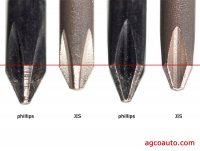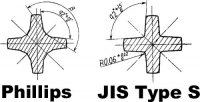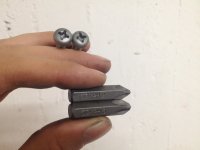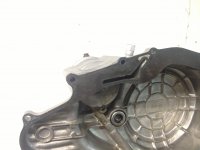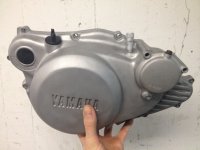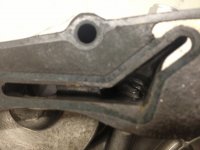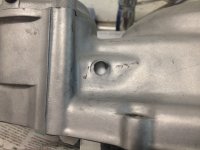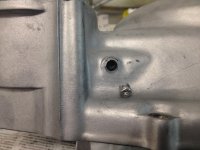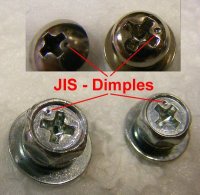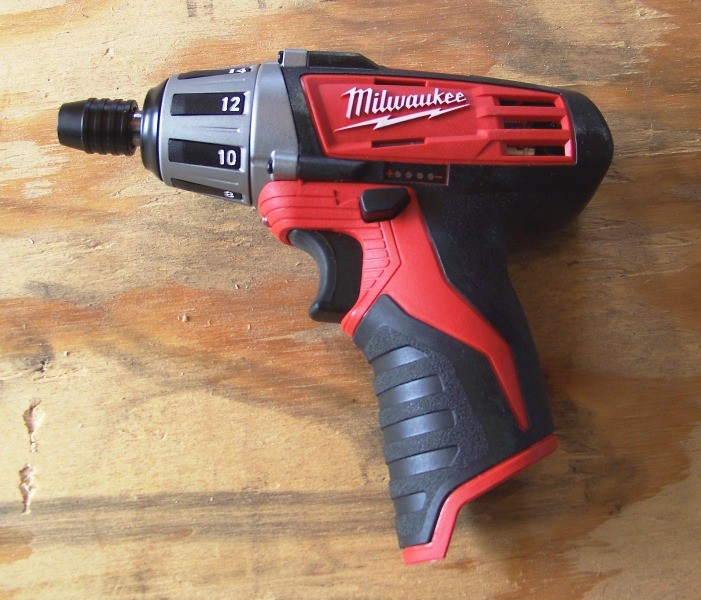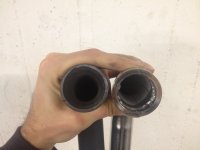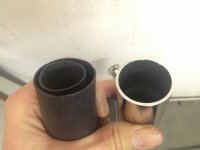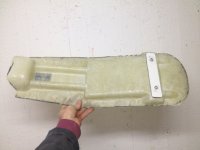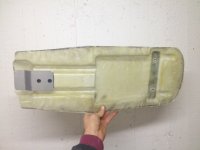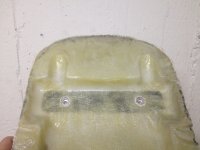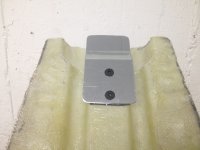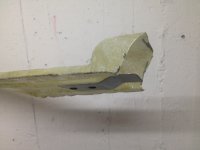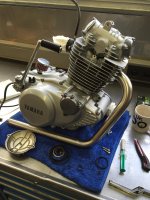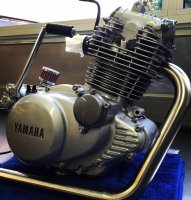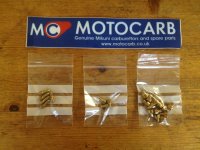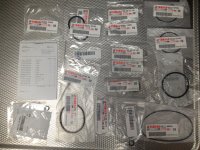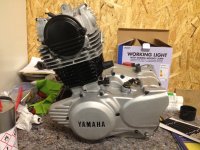Snapped a couple of pics comparing the stock header to the header I designed. As you can see, a large difference.
A couple notes about the header... I ran 3 different exhaust header calculators to some up with the dimensions I went with. There was only one compromise, and that was the diameter. The internal diameter of the header is 31.4mm which puts peak power at 7500rpm with an ideal length of 590mm. To bring the power lower in the rpm range (say to 5000 - perhaps better for the street), the internal diameter would ideally be between 29-30mm with a length of 686mm. This would mean using 32mm/1-1/4'' (outside diameter) tubing. To me, this size tubing looks pathetic - just look at the stock Honda Transalp xl600v header. Looks lame (to me

). So I decided to go up one size in tubing to 34mm/1-3/8'' tubing (outside diameter) for better looks and made the pipe longer (800mm) to compensate (longer for more torgue) - bringing the power back down to around 6000rpm. Of coarse the chosen silencer will play a role as well but these calculations were done with consideration to the header alone.
So, final dimension comparison:
Stock internal diameter: 26mm
Jadus internal diameter: 31.4mm
Stock length: 670mm
Jadus length: 800mm
There is also the idea that customers can cut down the size of the header pipe depending on their tastes and chosen silencer. The header comes with a split tube reducer to go over the end of the header and bring the diameter up to 38mm allowing the fitment of a wider range of silencers (using the usual reducers that come with them).
One more thing... Using tubing any thicker/larger in diameter would be for looks only (according to the calculations) - which would include any attempt to cut out the internal pipe on the stock header and just run the outer. This would be fruitless, unless you wanted the power to be strong from 9000 - 10000rpm, just outside of the SRs redline/capabilities.
Just to get a second opinion I contacted the guys at Poweroll and they backed up my ideas - they suggested that for a 250cc engine putting out 20-25hp, a header pipe with 1-3/8'' tubing and a length of 31'' would be ideal - which is 34mm outside diameter and 787mm length - not far off the pipe I designed ;D
All this information could of coarse be completely useless unless properly backed up!!! Haha. When the bike is done, I will get some prices from a couple local shops with dynos and do some proper testing. I just ordered 20 genuine Mikuni jets for the carb for this testing purpose as I hope to give customers/anyone with an SR a good jetting baseline for a few different airfilter and header combinations. While at the dyno, I will do the temperature tests with the valve covers and the oil filter cover too.
Btw, anyone ever dynoed an SR250 or heard of anyone doing it? Plenty of videos on youtube of SR400s and 500s on dynoes but no 250s. Guess its never been worth it to anyone haha. I suspect the claimed 17-20hp (different models) would have been from the engine and not the wheel, meaning maybe 12-15hp at the rear wheel... We'll see ;D



